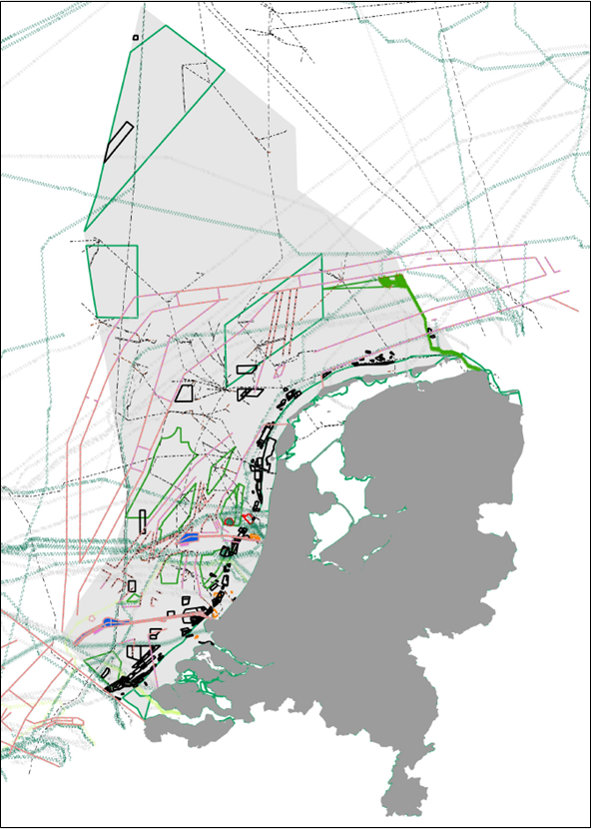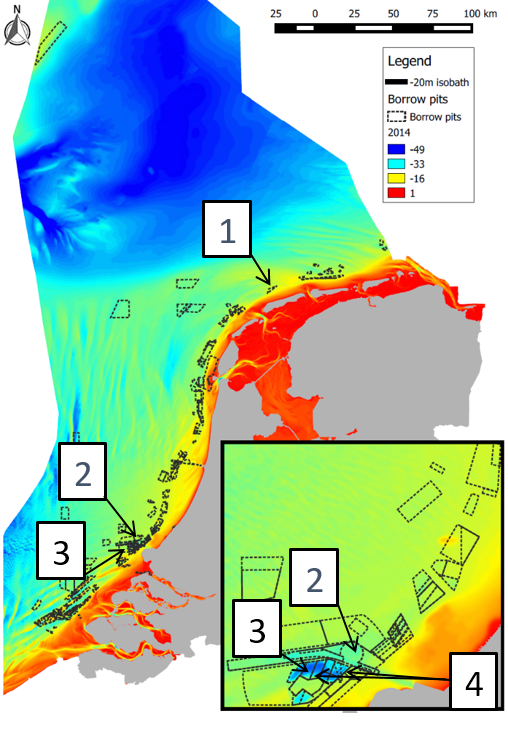About
In the Netherlands, the demand for marine sand is still increasing. In 2015, a total volume of 26 million m3 of sand was extracted from the Dutch Continental Shelf (DCS) for coastal nourishment. Due to the expected sea level rise, the demand for sand to maintain the Dutch coast with nourishments may increase from 12 million m3 to 40 – 85 million m3.
Next to sand extraction, many other facilities and services are provided on the DCS such as wind parks, oil and gas platforms, cables and pipelines, shipping and fishing and to keep the harbours accessible also maintenance of shipping lanes and the disposal of dredged harbour sediments (Fig. 1). Specific areas are also designated as Natura2000 areas.
To safeguard the supply of sand, new sand extraction strategies are needed to the balance between impacted surface area, sand yield, costs and ecological effects.

On the DCS, sand extraction takes place in areas with water depths over 20 m. Until recently, extraction depths were restricted to 2 m below the seabed. In 2000, possibilities of extraction depths larger than 2 m below the seabed were explored (Boers et al. 2000). It became clear that in water depths of less than 40 m, the chance of reduced seawater oxygen content is rather small and that re-establishment of macrozoobenthos (organisms living in and on the seabed) on the seabed is possible.

Currently larger extraction depths are allowed, for the development of harbour enlargement Maasvlakte 2 of the Port of Rotterdam, 220 million m3 of sand was extracted. Extraction depths up to 20 m below the seabed were employed mainly to decrease impacted surface area. All these activities can be considered as ecosystem services (Boerema et al., 2016).
To further exploit these opportunities studies were made to better understanding of the system, the effects of shallow and deep sand extraction. Based on this knowledge a new approach to designinning sand extraction sites has been adopted.
Usage Skills
One needs to have knowledge of marine ecology (macrozoobenthos and demersal fish), sediment characteristics, hydrodynamics and morphodynamics. These different fields of expertise needs to be combined into ecosystem-based design rules in such a way that policy makers and the sand extraction companies know how to successfully apply these design rules.
BwN Interest
Due to the worldwide increase in the demand of marine sand and increase of other human activities space is becoming scarce. New sand extraction strategies are needed to optimise the use of space and safeguard the global supply of marine sand. Strategies which prevent against negative effects or even improve the productivity of an area is of interest.
